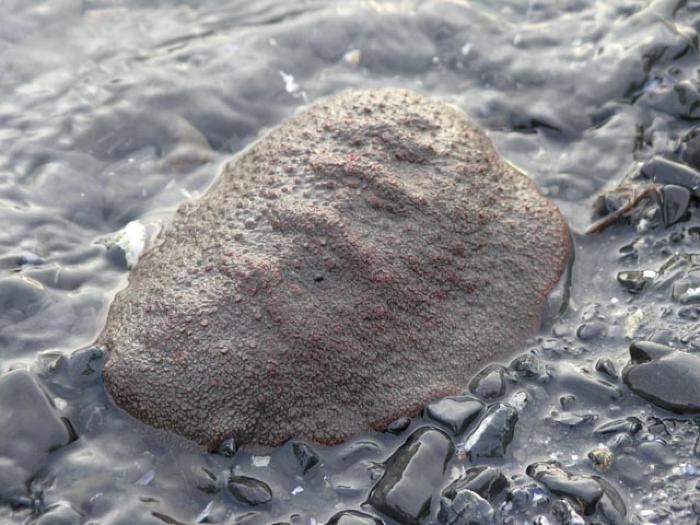Chiton — Uriitaq

Kodiak’s intertidal fauna includes a variety of chitons, a mollusk related to clams, snails, and limpets. Chitons have eight symmetrical, overlapping shell plates that cover a soft body and a large oval foot. Chitons are commonly found in the lower intertidal zone, where they can roll themselves into a ball for protection. Around Kodiak, these slow-moving herbivores are known as bidarkies, after the Russian word for the Alutiiq kayak, because they are curved on one side and flat on the other like a boat. Most common species in the archipelago grow to about 10 cm long, but the large gumboot (Cryptochiton stelleri) can reach over 30 cm in length and live up to twenty years.
Chitons can be collected during a minus tide in any month, although like other shellfish, people harvest them most intensely in the late winter and early spring months when other sources of fresh food are limited. Today, Alutiiq children pick chitons for a quick snack, eating the foot raw. To clean chitons, people immerse them in hot water to loosen their black skin and then remove the underlying shells and innards. Then they are eaten with seal oil or added to chowder. Old stories say that chitons were once mice that floated across the water and became stuck to rocks, eventually becoming uriitat.
